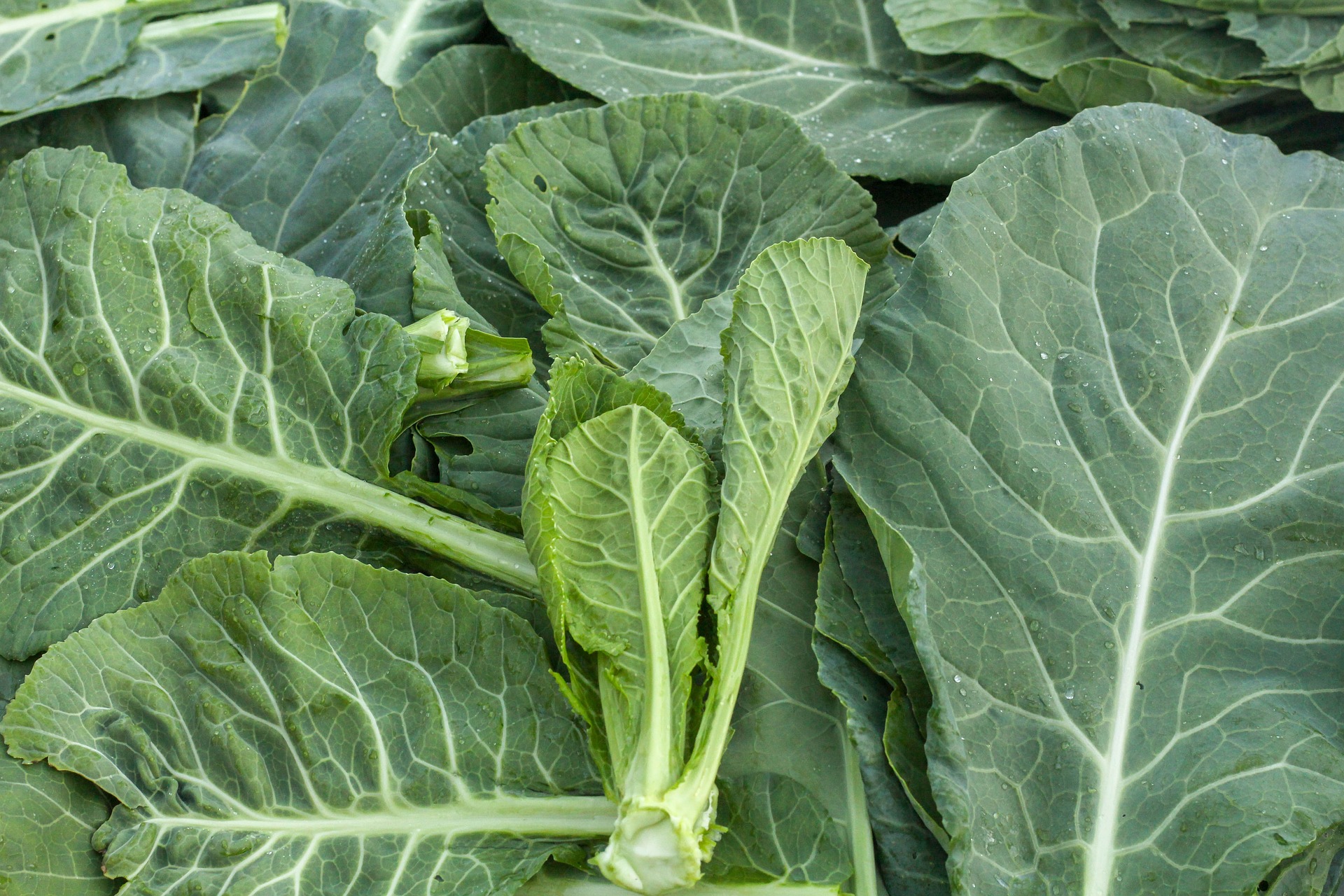
Also receive the Almanac Daily newsletter including gardening tips, weather, astronomical events, and more.
Planting, Growing, and Harvesting Collard Greens
Recipes
Cooking Notes
- The stems are bitter so most people cut out the stem from the leaves before cooking; however, they’re loaded with nutrients so another option is to cook them separately and much longer until tender.
- To avoid grittiness, wash thoroughly. Soak for 20 minutes and then scrub each leaf. Or, in the store, buy pre-washed collard greens.
- Serve collard greens with whatever you’d normally serve with cabbage.
- The most common way to cook Southern-style collards is to first sautée garlic and red pepper flakes in hot olive oil, add hot chicken broth (not water) and bring to a boil, and then add the greens and simmer for 45 minutes to an hour, until super tender but not mushy. Season with salt, pepper, and distilled white vinegar.
ADVERTISEMENT
We have 2 Collard green "trees" type. Do not know what the species is but so far one is approx 5 feet tall. One thing we have noticed is that the "codling moth(?)" loves to lay its eggs on the leaves. Love this added to stir frys along with what our friend Steve List ( Ask Mr. List on Youtube ) calls summer lettuce which is Swiss chard.
What are the planting dates for any greens in November
Hi Sharon,
Many greens are cool season crops, meaning they do best when grown in the fall or early spring. With that being said, planting dates depend on where you live and what type of winter your location experiences.
Our Planting Calendar is a great tool to use. Just put in your zip code or location and it will give you the ideal dates for planting all kinds of vegetables and greens. Here is a link: https://www.almanac.com/gardening/planting-calendar
You can also grow greens indoors. We have a great story that can be found here: https://www.almanac.com/grow-your-own-salads-indoors-all-winter
And according to our Best Days chart, which gives the best days for certain activities based on the Moon’s sign, the best days for planting aboveground crops in November 2023 is Nov. 20–22.












